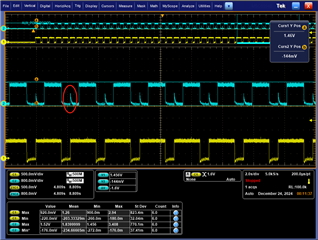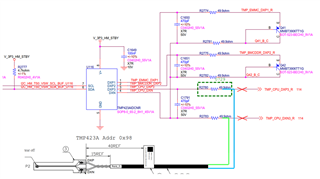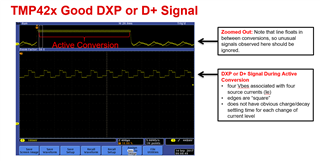Other Parts Discussed in Thread: DXP
Tool/software:
Hi Teams,
I’d like to confirm some questions regarding the signals on the DXP and DXN pins when VDD = 3.3V with PNP transistors:
- As shown in the waveform below, the signals represent DXP and DXN with respect to VSS. For CH2, does the waveform anomaly circled in red affect the test results?
- Regarding question 1, based on your experience, could this anomaly be caused by the layout? (If yes, what are your suggestions for improvement?)
- At an ambient temperature of 25°C, what voltage levels for DXP and DXN at High are considered reasonable? If we need to refer to the transistor specifications, which parameters would be the most appropriate reference?




